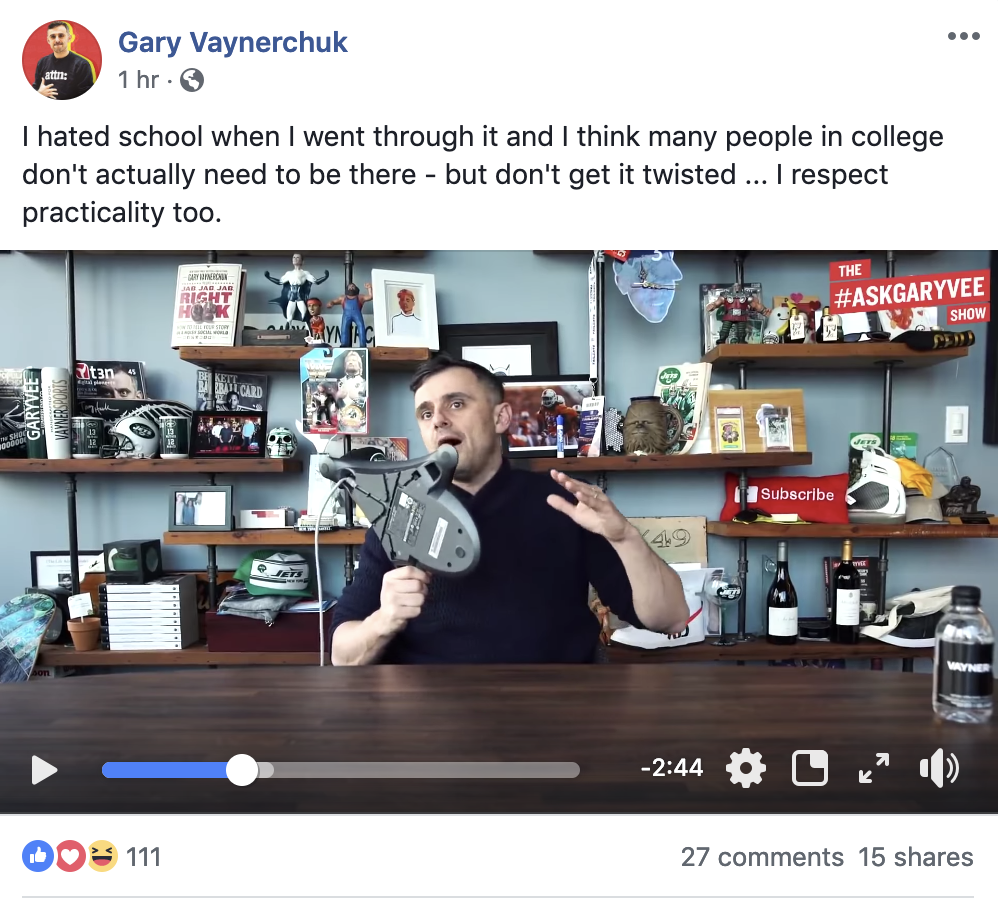Social media video is one of the best ways to connect with your audience online.
Open up any almost any platform: Facebook, Twitter, Instagram, Snapchat, and you’ll be sure to see a video somewhere near the top of your feed.
And video is still growing. According to Cisco nearly 80% of web traffic will be video by 2020.
It appears most marketers are now embracing video, with Buffer’s annual State of Social survey finding that over 85% of marketers post video content on social media.
So we know social media video is important, but where do you get started? And how do you ensure your videos are successful?
Tailored Social Media Proposal
That Drives Results.
Experiment with Stories
Stories are everywhere. Facebook, Instagram, Whatsapp, Messenger, and of course, Snapchat—the originators of the format.
Stories are used by more than one billion accounts every day (yep, billion… with a b). And if you want to connect with your audience using social media video in 2019, you can’t afford to ignore stories.
Stories are a vertical, mobile-first format. Organic stories are usually filmed and created on phones and don’t have to be highly edited and produced to be successful. The Guardian even found that “less polished” content worked best.
Stories only last 10-seconds, though they can be shorter. Whilst 10-seconds might not seem long, stories full-screen nature make them extremely engaging as there are no distractions around the screen and the viewer is full-focused on the content.
There’s also an opportunity to create sequences of stories to tell longer, more engaging narratives.
When it comes to advertising on Instagram, Animoto and Buffer found that stories ads were one of the most cost-effective ways to generate clicks back to their websites:

Use vertical video
Vertical video can be used outside of stories too and has plenty of benefits in both the Instagram and Facebook feeds, especially when you consider that 75% of video viewing happens on mobile devices.
In the same Animoto study mentioned above, it was revealed that the cost per views and cost per clicks were significantly lower with vertical video vs square video.
And just like stories, vertical video takes up more screen space. So your content will help to keep viewers engaged in your videos as there won’t be as many distractions around the screen.
As we progress through 2019 and beyond, we’ll likely see more and more brands adapt to vertical video. But now’s a great time to get ahead while most are still focused on square or horizontal video.
Grab attention in the first 3 seconds
Attention spans are short. In fact, a 2015 study found that the average attention span is just eight seconds.
If people are going to watch your social video, it needs to hook them in right away. For example, checkout the opening few seconds of this Casey Neistat video:
You might notice a couple of things:
- The title is engaging: Is This Bike worth $2000?
- The first few seconds show Casey riding through NYC, having fun. This makes you want to know more about the context of this situation.
If you can grab people’s attention instantly upon watching your video they are more likely to stay around for the whole thing. If you lose their attention early, or don’t give them a reason to keep watching, viewers won’t stick around.
A recent study also found that the first few seconds of videos are key, especially on Facebook:
Facebook and Nielsen research found that up to 47% of the value in a video campaign was delivered in the first three seconds, while up to 74% of the value was delivered in the first ten seconds.

Post natively
Almost every social platform has native video functionality now and when it comes to social media video best practices, this one is key.
To highlight its importance, on Facebook native video receives:
Here’s a natively posted Facebook video from Drift on Facebook:

Not only will this ensure your video looks great, it can also lead to higher reach and engagement.
Feature your brand early on
You want viewers to connect your content and your brand early on. It’s no good creating a one minute long video and only showing your logo at the end.
Very few viewers ever reach the end of social videos and if you don’t get your brand in early, you could be wasting your time.
When it comes to getting your brand into your social media videos, Facebook recommends:
Using colours, themes and imagery that evoke your brand at the start of your video can help people connect the video and your brand quickly. Consider starting your video with lifestyle and product shots, recognisable spokespeople, action scenes or a vivid background to spark interest.
You could also try to ensure your brand is visible at all times while your video is playing. For example, here’s how Gary Vaynerchuk does it with his #AskGaryVee show (notice the logo in the top right corner):

Create for mobile
As we mentioned earlier 75% of social media video is watched on mobile devices, so you should be thinking mobile-first when it comes to creating social media videos.
Facebook has also shared that 67% of all videos viewed on smartphones are short and watched on the go and you should consider that when it comes to content planning.
Here are four tips for creating mobile videos:
- Design for sound off: With so many people watching social media videos on the go, it’s important to ensure your content makes sense and is easy-to-follow without the sound turned on. A great way make your content understandable without sound is to use captions and text to provide context to the video.
- Start with key content: You only have a few seconds to get viewers engaged in your social media videos. Kick off each piece of content with a bang and give viewers a reason to stay around. You should also use the copy accompanying your video to grab attention and provide context.
- Experiment with dimensions: We mentioned vertical video as a great option above, but the only true way to find out what works for your business is to experiment. For example, test out one square video vs one vertical video to see what gets the best results.
- Try boosting with ads: Want more viewers? Facebook ads are a great way to test out new videos and boost reach.
7. Understand your goals
Creating social media videos because everyone else is doing it isn’t a good reason. You need a clear goal.
Before creating any videos ask yourself “what do I want to achieve here?”
For example you might want to use video to:
- Grow your audience and brand awareness: Video can help you to increase the number of people that interact with your brand on social media. Video can also be a great way to put your brand in front on new audiences and build awareness.
- Generate leads: Videos can be a great way to generate leads for your business. Especially now that Facebook video sand Instagram ads offer CTAs to encourage viewers to click through to your website or sales page.
You might also want to think about the stage of your sales funnel video viewers might be at.
If people are early on in the consideration stage, you might want to focus more on a fun, engaging viewing experience rather than something focused directly on your product. This is an approach the Miami Dolphins used well.
When trying to sell season tickets the Dolphins used video as a way to build an audience of people that might be interested in its product and then re-targeted those video views with lead generation focused ads.
- Experiment with stories: The stories format is everywhere now and if you’re not testing out stories for your business, you’re missing out on huge opportunities.
- Use vertical video: Vertical video tends to be more engaging, especially on mobile devices.
- Grab attention in the first 3 seconds: If you can’t get a viewer’s attention in the opening seconds, they won’t stay around for long.
- Post natively: Native video almost always out-performs cross-channel video posts. Where possible, always post natively.
- Feature your brand early on: You want to ensure your brand is seen in each video and the best way to do this is to include it right at the start.
- Create for mobile: Every year more and more video is consumed on mobile. Try to think mobile-first with your social video strategy.
- Understand your goals: You need to have clear goals for each video you create. Otherwise, you won’t be able to measure its performance.
Do you have any social video best practices you’d like to share?


